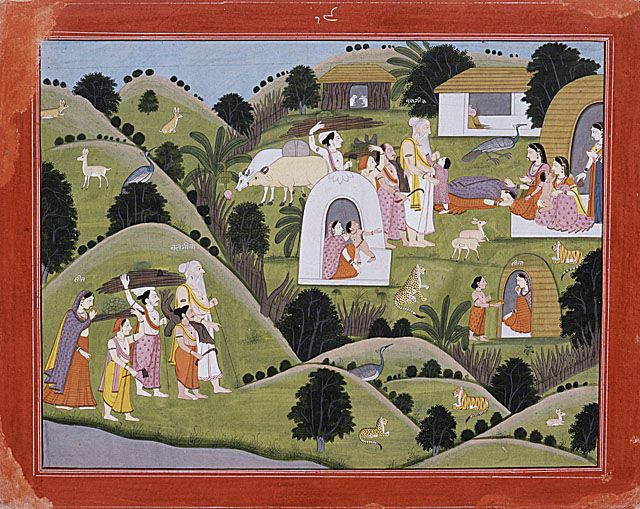Ramayana Epic Translated Into Polish: The Surprising Links Between Warsaw And India

Ramayana, the ancient Sanskrit epic of India, has been fully translated into the Polish language for the first time due to the efforts of Janusz Krzyzowski, an Indologist in Poland.
“My main purpose was to translate this epic into many chapters in a story format so that laymen and particularly Polish children could enjoy the book as well as they [are] aware of the great Indian mythological tradition,” Krzyzowski, who is also president of the India–Poland Cultural Committee, told Indian media.
“Ramayana and Mahabharata are two great epics which cannot [be] compared with other epics. Even Greek epics come out as pale shadows when we see the canvas of the Indian epics. They are almost unique in the history of mankind.”
In connection with the translation, the Hindu newspaper of India reported, a theater group supported by the Indian embassy in Warsaw is planning to stage a two-hour dramatization of Ramlila -- a part of the Ramayana that tells the tale of a 10-day battle between Lord Ram and Ravan -- in various Polish schools in May.
“He [Krzyzowski] has done great justice to promote India in his nation. He deserves all our praise, and we feel proud that such a gem is with us in Poland,” Indian ambassador to Poland Monika Mohta told Indo-Asian News Service, or IANS.
Poland and India, which have virtually nothing in common, have nonetheless long enjoyed close and cordial relations.
According to the Wyższa Szkoła Zarządzania (Polish Open University), as long as the 15th century, Polish writers visited India and gained a deep appreciation for the local culture. Bu the 19th century, Sanskrit manuscripts were translated into Polish, while Universities in Krakow, Warsaw, Wroclaw and Poznan developed Indian studies departments.
In 1936, the Society of the Friends of India was founded in Warsaw, followed by the formation of the Polish-India Cultural Association in Kolkata under the patronage of renowned Bengali poet Rabindranath Tagore.
In fact, two prominent Poles -- Maurice Frydman (Swami Bharatananda) and Wanda Dynowska (Umadevi) -- both of whom converted to Hinduism , participated in India’s struggle for independence and later formed the Indo-Polish Library, which played a key role in translating Indian religious texts into Polish.
During the Second World War, the Jam Sahib [ruling prince] of Jamnagar, a district in the western Indian state of Gujarat, accepted 5,000 Polish orphans who were deported from Siberia. These children later formed the World Association of Poles from India.
After World War II, as allies of the Soviet Union, New Delhi and Warsaw became natural friends.
Following the collapse of the Soviet empire, India and Poland again found themselves on the same side, seeking closer relations with the West.
Poland has also honored prominent Indian figures by naming streets after such luminaries as Tagore, Mahatma Gandhi, Jawaharlal Nehru and Indira Gandhi in Warsaw and Krakow.
On the economic front, bilateral trade between India and Poland surpassed the $1 billion level in 2008 and approached $1.5 billion in 2011, according to Polish government statistics.
“Given Poland's importance in Central Europe, India could further strengthen bilateral relations and trade and economic cooperation,” Polish Open University stated.
”[Poland] could serve as a gateway for goods and services to the vast EU, CEFTA [Central European Free Trade Agreement ] and CIS [Commonwealth of Independent States] markets. With its economy growing at a rapid pace, it is already India's largest export market in the region.”
© Copyright IBTimes 2024. All rights reserved.





















